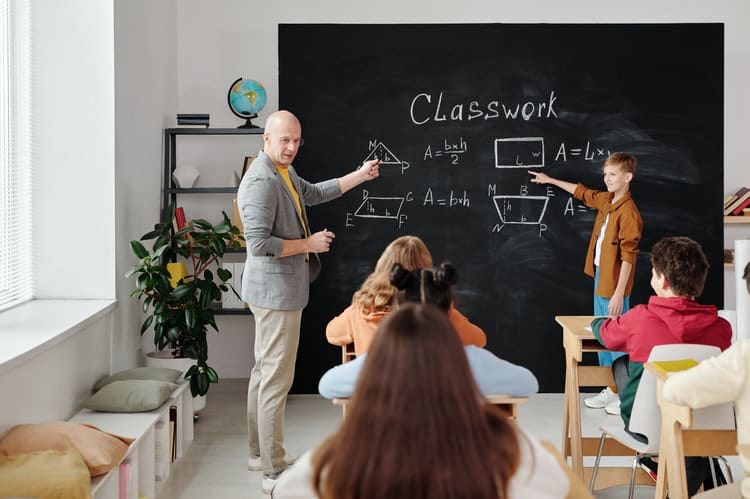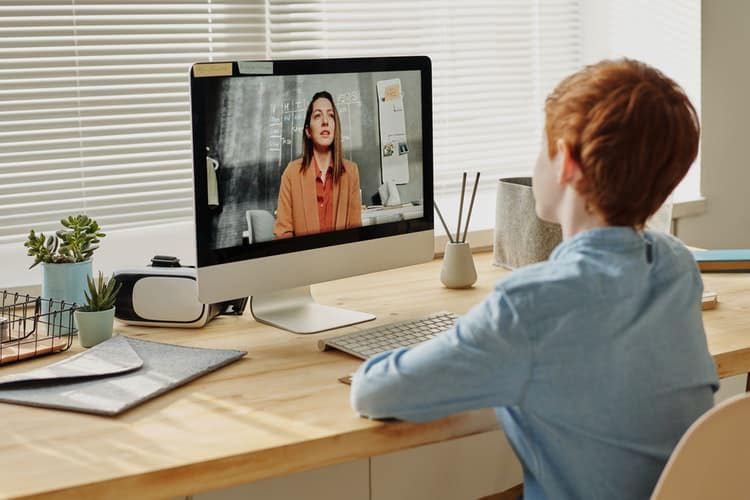It’s no secret online learning has immensely transformed the educational sphere. And its impact will continue to be felt with the technological revolution.
But will it take precedent over the traditional classroom? Will online learning replace in-person classes? Or does the physical classroom offer something that makes it hard to replicate?
In a bid to help settle the debate, this post looks at:
- The strengths and weaknesses of both systems of learning.
- The impacts of over-reliance on technology, the medium of E-learning.
Why the Traditional Classroom is Important

The classroom offers a crucial social interaction experience
The classroom boasts the benefit of irreplaceable social interaction, which remains a dream when students learn online.
There’s so much that happens in a traditional classroom — not only students listening to the teacher and taking down notes.
Those little extras such as playing during breaks, non-verbal communication, and face-to-face conversations and exchanges contribute immensely, health-wise, especially to young learners.
What’s more, a physical classroom teaches invaluable life skills. Students are free to join clubs and societies, while schools organize fairs and competitions. All these are opportunities for learners to develop new interests and skills crucial in day-to-day life.
That’s not to say creating conversations online is impossible. You can still type and exchange messages via the gadgets, but the experience can’t match what you get in in-person classes.
The optimal learning environment
The traditional classroom offers the ideal learning environment as students can focus much better than attending virtual lessons.
Away from home, it’s easier to focus on classroom matters. There are no distractions like ambient household noise, entertainment devices, and technical responsibilities with online learning.
Also, for those having social constraints to deal with, the traditional classroom is a release from emotional triggers, underlying mental health issues, and family difficulties.
The suitable mode of vocational training
A traditional classroom-based setting has the advantage of supporting vocational classes to those who wish to specialize in the trades, arts, etc.
Students can access valuable resources, including labs and studios only in schools, limiting vocational training to the traditional classroom.
Cons of the Traditional Classroom

The costly nature of the traditional classroom
You’ll have to fork out thousands of dollars (or through public taxes) per term to get a chance in a prestigious school that offers the best education. This discourages many learners and is why adults are shifting to E-learning. Even traditional brick-and-mortar schools have fees and maintenance costs that are passed on to students.
Not conducive for critical thinking skills
Instead of nurturing the students to apply what they experience and learn in a physical classroom, the emphasis is on memorization of facts, which most young people only do for the sake of passing assessments.
Benefits of Online Learning

Convenience
The convenience of online learning is one can learn wherever they are. And even better, students have the luxury to choose when to do classes as instructors record and store lectures and discussion documents in an online database.
This convenience allows for a self-paced mode of learning, although it calls for a lot of self-motivation.
Lower costs
Online learning costs are lower compared to traditional classrooms, and it’s easy to see why.
The tuition fee is low as students, learning from home, avoid real estate charges and expenses of school meals. Also, this system of learning eliminates commuting and parking costs as students don’t need to travel for lessons.
Moreover, the mode of learning is paperless, which contributes to its low cost.
Enhanced technical literacy
While expanding knowledge in their area of study, students learn how to use interactive online tools and new skills with online learning technology.
Cons of Online Learning

Limited to only theoretical subjects
Virtual learning may be effective for humanities and social science disciplines. But it struggles in scientific and film courses, as these need hands-on practical experience.
It’s easier for students to cheat
Because students can take assessments in their preferred environments, cheating is a common vice in online learning.
The instructors often endure difficulties observing the students, who may allow third parties to take the assessments on their behalf.
To counter this problem, some schools teach the course online and have the exam written in person or completed at an assessment center.
Are there concerns associated with too much screen time?
Screen time increases when students shift to E-learning as screens, in the form of smartphones, televisions, and computers, are part of everyone’s life.
And yes, increased screen time comes with health hazards, not only for children but adults as well. Some of the potential health risks are:
Strain to the eyes
Staring at digital screens too much causes eye strain. This can go further to damage the eye retina and cause blurred vision.
Sleep problems
The blue light emitted from digital screens inhibits the production of the sleep hormone in your body. That, in turn, prevents a good night’s rest.
Cognitive impairment
Too much screen time interferes with brain development, and the side effects may include reduced memory, poor concentration, and slower information processing.
Will the negatives of constantly relying on technology outweigh the positives?
Technological advancements have transformed the world and the way people learn. But despite that, constantly relying on technology breeds unpleasant vices such as:
Reduction in problem-solving
This owes to the fact that digital life may lead to loss of cognitive ability. With an impaired brain, problem-solving is a challenge.
Critical thinking
Again as constantly relying on technology takes a toll on the brain, critical thinking becomes a problem as one struggles to learn new things.
Lack of social life
While being the cause of isolation, over-dependence on digital life may make one unable to live without it as it continues to threaten our psychological well-being. This means that some social activities like going camping in the backcountry are hard to initiate.
Conclusion
Online learning won’t replace the traditional classroom, at least not so soon. There’s so much you can’t afford to miss that online classrooms take away.
That said, with the benefits we’ve seen in this post, online learning is a crucial player in the educational world, and learners will benefit from a healthy mix of the two systems. E-learning is not just icing on the cake but rather a great add-on to the traditional classroom.
